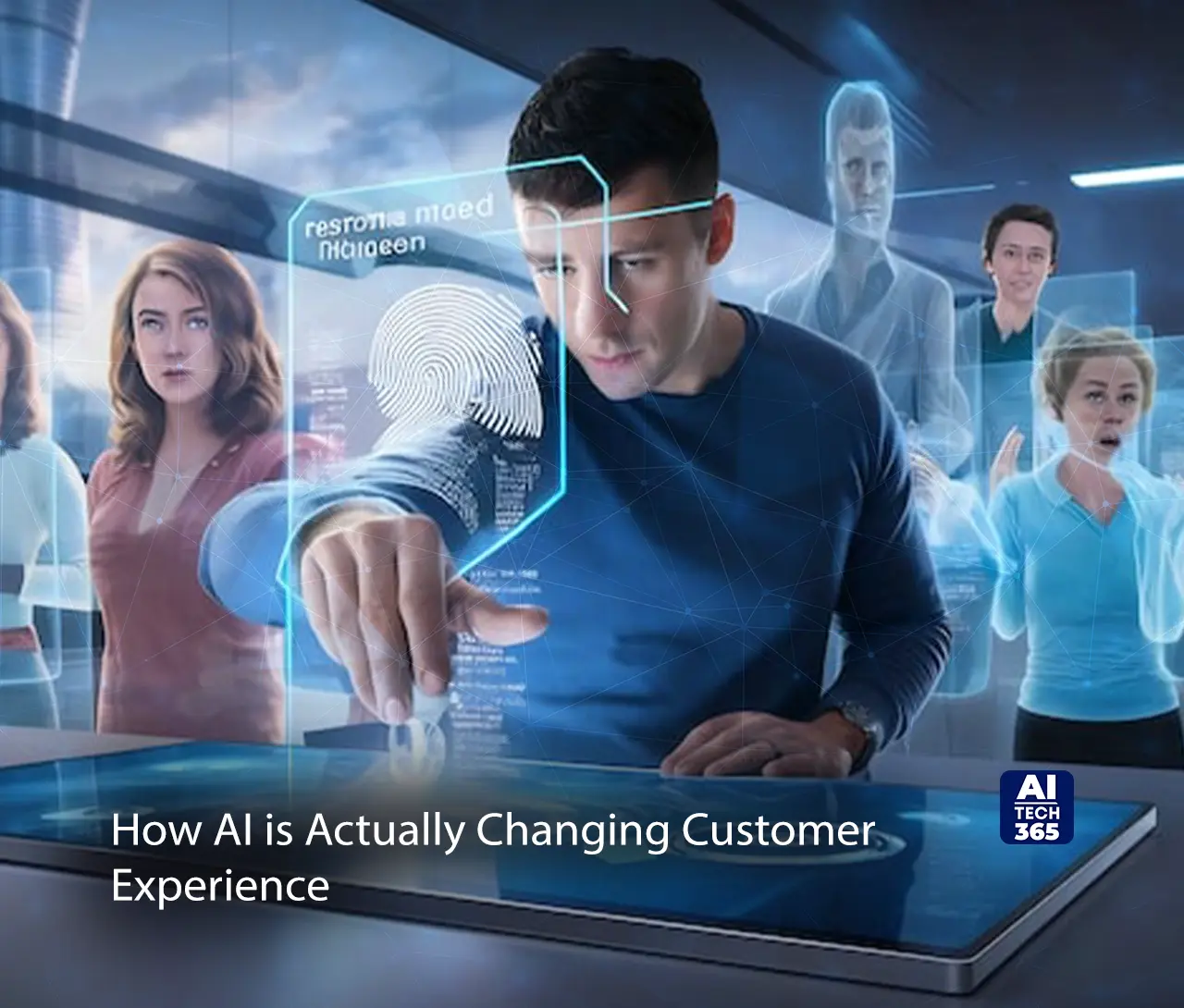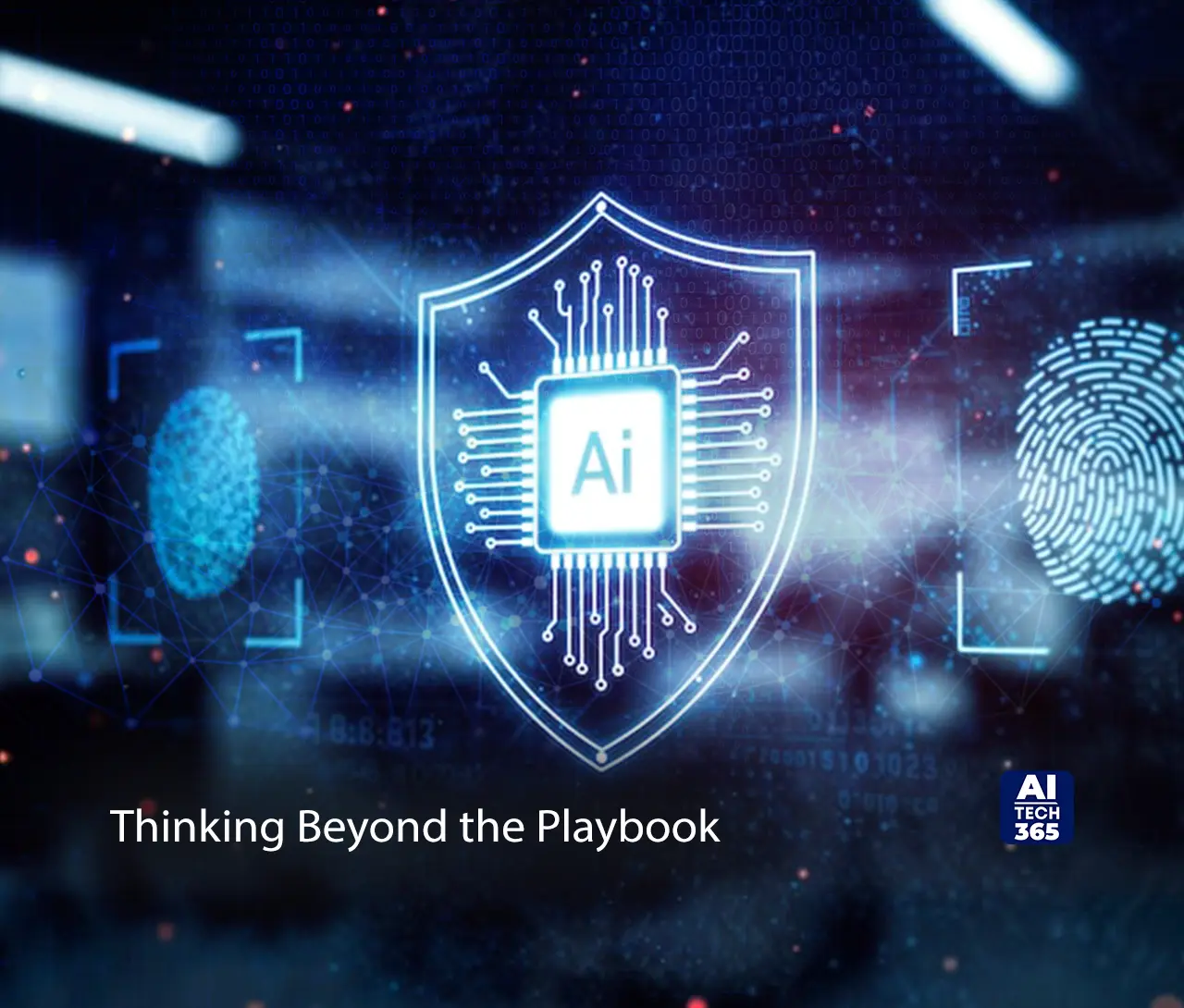Customer experience transformation isn’t just a buzzword. It’s about moving from reacting to problems to actually anticipating what people need. Companies can’t wait until someone complains or decides to leave. People expect experiences that actually feel personal. Like how Amazon or Netflix seems to know what you want before you even think about it.
AI makes that possible. Not just for big campaigns or simple segments. It can handle real one-on-one interactions as they happen. It helps teams see what a customer wants, suggest the next step, and even guide them through choices in a way that actually feels human.
The World Economic Forum highlights how AI agents are already changing the game. They streamline journeys, add a sense of expertise, and make interactions feel certain and personal. Across consumer industries, AI is leaving a lasting mark on business, people, and society. This article walks through a four-step AI Playbook to turn strategy into scale and deliver real change.
How AI is Actually Changing Customer Experience
Customer experience transformation isn’t just about answering questions quickly anymore. People notice if a company doesn’t seem to understand them. Old automation can handle forms or simple requests, but that’s all it does. AI is different. It can see patterns. Sometimes it figures out what a customer might need next. It can even alert someone before things go wrong. At the same time, it does the boring stuff no one wants to do, so people can deal with the real problems.
A lot of CX projects fail because companies treat them like a service issue. Systems don’t talk to each other, data sits in different places, and teams work separately. If you want this to work, you need connected data and AI that actually helps people make decisions. And someone needs to push it all forward, strong martech leadership makes that happen. When it clicks, companies stop giving generic replies and start giving experiences that actually feel human.
The AI Playbook for Hyper-Personalized Customer Journeys
Step 1: Establish the Unified Data Foundation
You can’t transform customer experience without seeing the full picture. Most companies have data all over the place; CRM, ERP, web apps, contact center logs. It’s messy and disconnected. The first step in customer experience transformation is putting it all together. A Customer Data Platform or similar system helps you do that. You want real-time feeds so every click, login, or call updates the system immediately. Google Cloud’s 2025 research shows businesses connecting their data and using AI to spot trends and tailor actions instantly. Over a thousand real examples prove that even a few well-integrated sources can change how a business interacts with customers. The goal is clear: one view of every customer so each interaction feels personal and timely.
Step 2: Identify High-Impact Use Cases and Metrics
Once your data is unified, pick a few areas to focus on. Don’t try to do everything at once. Maybe you start with predicting churn and reaching out before a customer leaves. Or help support teams with AI-powered next best actions. Dynamic landing pages that shift based on the visitor can even make a difference in testing. Just check the real outcomes like CSAT, cost-to-serve, and lifetime value. Google Cloud emphasizes AI trends such as hyper-personalization and AI agents facilitating human work in a smarter way. Over a thousand real-life stories show that even small pilots can have big effects. The point is to prove value before scaling, making the customer experience transformation real, measurable, and practical.
Step 3: Prototype, Iterate, and Train
After choosing your use cases, build a small AI solution that works and learn from it. Don’t wait for perfection. Microsoft shows hundreds of companies running AI pilots, iterating constantly, and keeping humans in the loop. People check AI suggestions, spot errors, and fix bias. That makes sure AI doesn’t just make random recommendations. The early adopters in service to the customers experienced quicker replies, excellent agent help, and no longer the whole bunch of people having all the time and resources for the right issues instead of just for erroneous ones. The ability to pivot at a fast pace not only allows you to determine what is effective, what is not, and what can be expanded but also to improve the customer experience gradually by maintaining the trust with the customer.
Step 4: Governance and Enterprise Scaling
Finally, you need a plan to grow AI responsibly. Governance boards and ethics policies make sure AI is used correctly. Salesforce reports that AI agents improve service by offering context-aware guidance and acting autonomously, but only if oversight is in place. Scaling is not merely adding more channels; rather, it is by integrating AI into daily workflows and providing support to the teams. It is very important that your employees receive training on AI orchestration. Salesforce anticipates that AI will continue to influence customer experiences in various sectors from retail to healthcare. When there is effective governance and scaling, AI no longer remains an auxiliary project but turns into a core aspect of your company’s value delivery. That is real customer experience transformation in action.
The Playbook in Practice
Case Study 1: Churn Reduction in Telecom
Telecom companies lose customers all the time. The question is how to stop it before it happens. One company began utilizing behavioral data in order to determine those that would possibly leave.
Customers were classified into three categories according to their level of risk: high, medium, and low risk, and then fast actions were taken. They not only responded to grievances or demanded cancellations, but also, thanks to their innovative work, they brought about such personalized service that they went as far as supporting customers proactively, sending personalized messages and giving it all to the customer in terms of service.
The little things that were done made a tremendous impact. People felt recognized and valued. The churn rate dropped noticeably. This wasn’t just a marketing move. It was not just an individual step but a complete transformation customer experience transformation.
Utilizing AI for behavior prediction resulted in the company shifting from reactive service to proactive engagement. The teams were able to concentrate on the suitable customers at the suitable moment and the outcomes were impressive.
Case Study 2: Real-Time Service Optimization in Retail
A retail brand was struggling with customer support overload. Calls, emails, and chats piled up. They brought in AI to help. The system read each inquiry, judged the sentiment and intent, and then suggested the best action to agents. It also gave a quick summary of the customer’s history. Agents didn’t have to dig through old tickets or guess what to do next.
Everything was faster, smarter, and more personal. Customers noticed. The happiness of the customers increased, the time taken to respond decreased, and the agents’ stress level lessened. It was a demonstration of how the AI could make instant changes and enhance the daily communication.
Again, it wasn’t just about speed. It was a step in their customer experience transformation journey, making every touchpoint feel thoughtful and precise.
Thinking Beyond the Playbook
AI can do a lot, but it comes with responsibility. If a company tries to personalize every interaction, they need to be careful. Customers notice if their data isn’t handled properly. Transparency and privacy aren’t optional. They build trust. At the same time, algorithms can be unfair. If one group of customers always gets better offers or service, it undermines the whole goal. Watching for bias and testing models regularly is essential.
Customer experience transformation isn’t just about technology. It’s about people too. Teams need to work together. Data scientists, CX designers, and journey owners all need to be in sync. The AI model isn’t a one-time project. It’s something you have to keep looking after. You can’t just set it and walk away. You see what it does, make small tweaks, test it in the real world. When teams actually pay attention, work together, and keep trying new things, AI stops being just a tool. It starts helping for real. It actually makes every interaction feel personal. Fair. Thoughtful.
End Note
Customer experience transformation is about moving fast, scaling what works, and making things personal. AI helps, but it’s only part of the story. The real change comes when teams pay attention, use data, and make every interaction count. The Playbook shows how to go from reacting to problems to actually seeing them before they happen. Do it right, and you don’t just keep up but you get ahead. Customers feel noticed. Teams feel capable. Every touchpoint starts to matter. The advantage isn’t just the technology. It’s how you use it to make experiences human.


